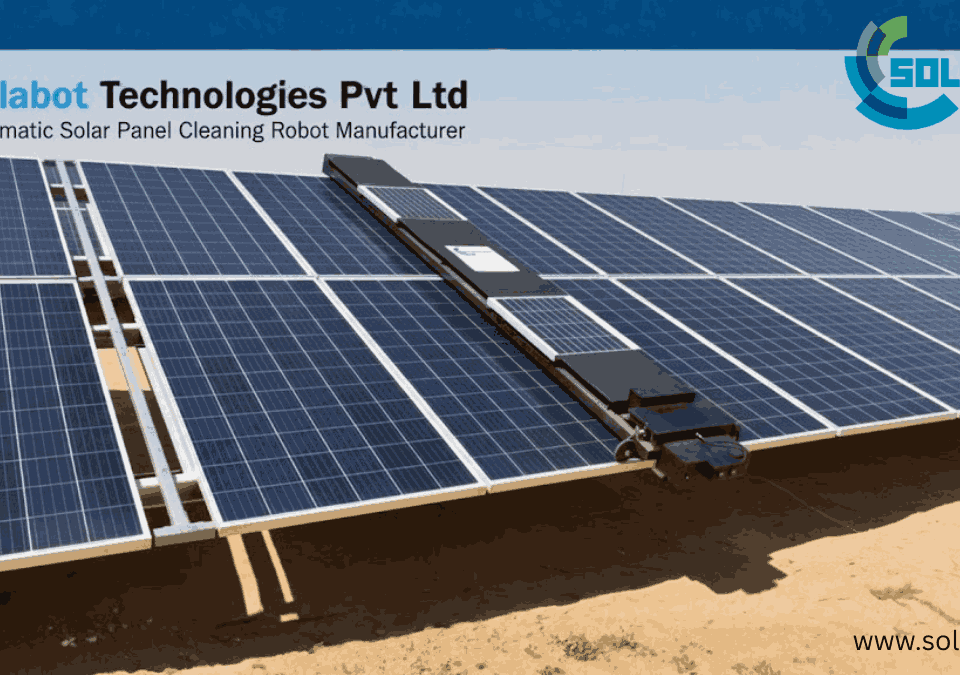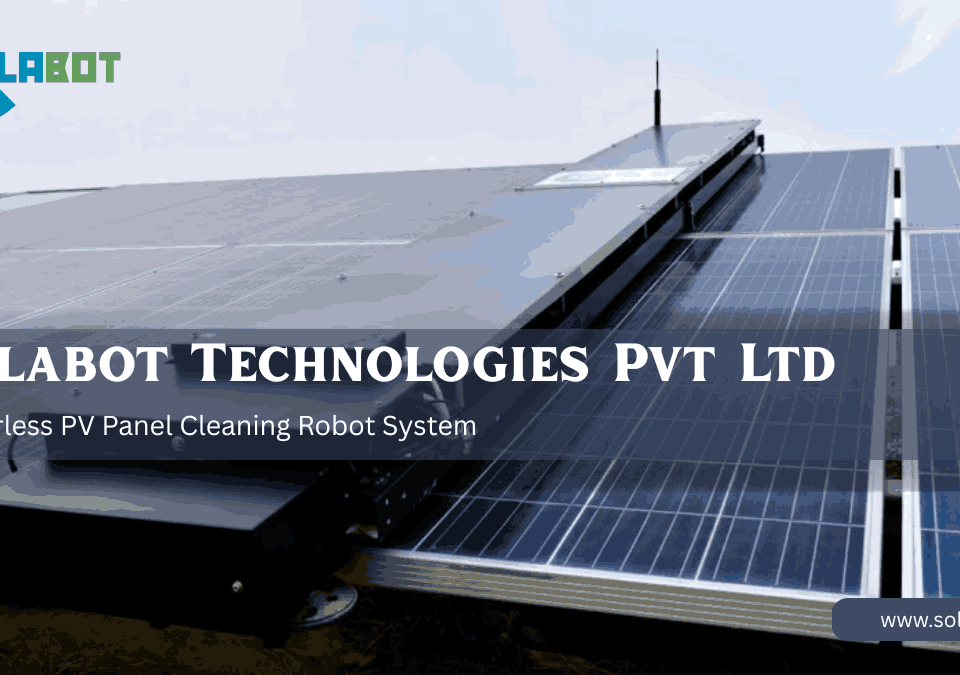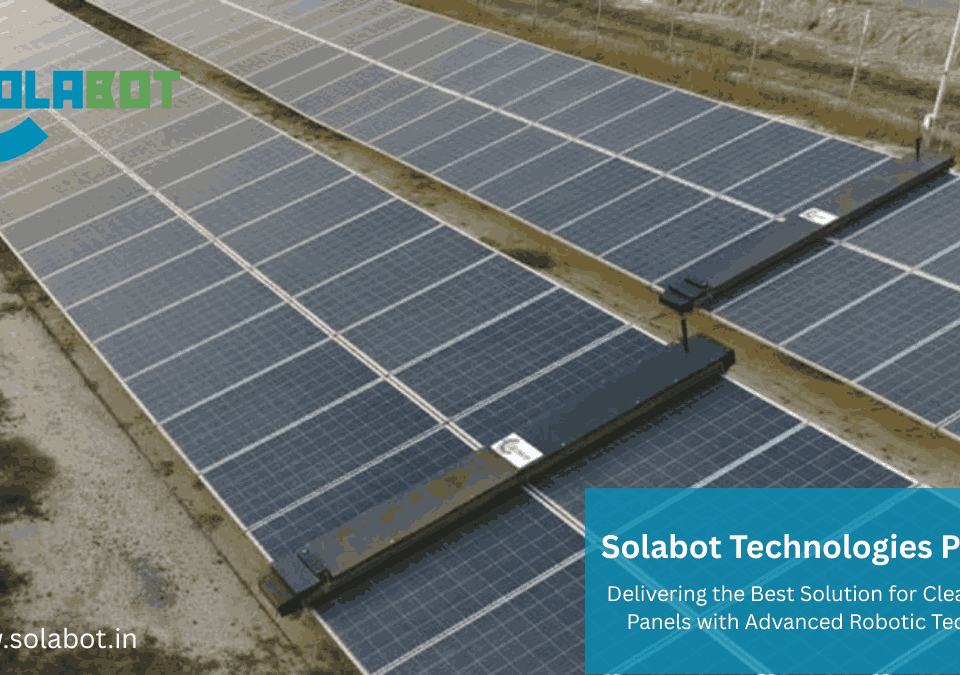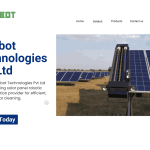
Why Solabot Technologies Pvt Ltd Is the Leading Robotic Solar Panel Cleaning Solution Company in India
August 7, 2025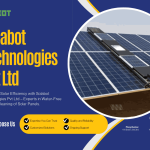
Sustainable Solar Cleaning with Solabot Technologies Pvt Ltd – Leaders in Water-Free Robotic Technology
August 12, 2025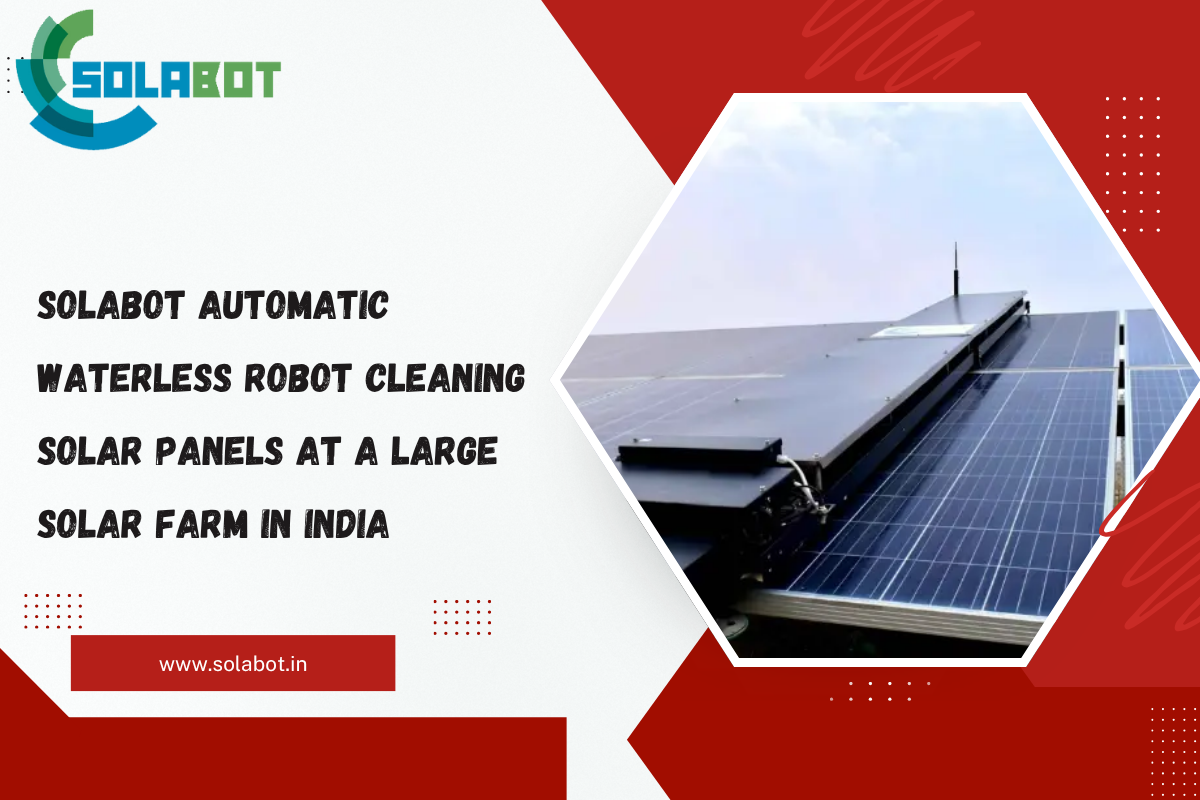
Solabot Technologies Pvt Ltd — Automatic Waterless Solar Panel Cleaning Robot in India
Introduction
As India’s solar capacity grows, so does the need for efficient, low-cost maintenance. Dust, bird droppings and grime can reduce a solar panel’s output by up to 25% or more — a serious loss for farms and commercial rooftops alike. Enter Solabot Technologies Pvt Ltd, a pioneer in the Indian market offering an automatic waterless solar panel cleaning robot engineered to keep panels clean, maximise energy yield and lower operational expenses. In this blog we’ll explore how Solabot’s solution works, its advantages, key features, applications, and ROI considerations.
Why Regular Solar Panel Cleaning Matters
Solar panels perform best when their surface receives unobstructed sunlight. In many parts of India — especially arid and semi-arid regions — dust accumulation is rapid. Even urban pollution, pollen and seasonal debris can form a film that blocks sunlight and reduces efficiency. Regular cleaning preserves generation capacity, protects warranties (often tied to maintenance regimes) and extends the life of the installation.
What Makes Solabot Different?
Solabot focuses on waterless, robotic cleaning — an approach that’s especially valuable in India where water is scarce or expensive. Rather than relying on hoses, high-pressure sprays or repeated manual cleaning, Solabot’s robots use soft brushes, controlled suction and precision motion to remove dirt without chemicals or water. Key differentiators include:
- Waterless operation: Eliminates the need for gallons of freshwater per cleaning cycle, lowering environmental impact and operating cost.
- Automation: Scheduled cleaning cycles with minimal human intervention, controllable via on-site panels or remote monitoring systems.
- Gentle yet effective cleaning: Soft brushes and micro-fibre rollers remove dust without scratching the anti-reflective coating or glass.
- Scalable design: Robots can be used on single rooftop arrays or linked for utility-scale solar farms.
- Low energy usage: Designed to draw minimal power from the array or on-board batteries to avoid excessive parasitic loss.
Key Features and Technical Highlights
- Waterless cleaning technology that conserves scarce water resources.
- Autonomous scheduling with options for remote monitoring and cloud reporting.
- Modular components to scale coverage for large sites.
- Lightweight construction to reduce mechanical stress on panels.
- IP-rated enclosures for dust and rain resistance.
- Compatibility with common panel sizes and mounting frames used in India.
Benefits for Solar Plant Owners in India
- Improved energy yield: Regular cleaning restores panel performance, raising kWh output and increasing revenue.
- Lower OPEX: Reduced labour, reduced water bills and predictable maintenance cycles.
- Faster ROI: Higher and more consistent generation accelerates payback.
- Environmental advantage: Waterless cleaning reduces water consumption and related logistics.
- Safety: Automation reduces the need for workers to climb roofs or manually handle panels in hot conditions.
Typical Applications
- Utility-scale solar farms in Rajasthan, Gujarat, Maharashtra and other high-insolation regions.
- Commercial rooftops for factories, malls and office complexes.
- Solar carports and parking structures.
- Agricultural solar installations (agrivoltaics) where water must be reserved for crops.
- Remote or off-grid arrays where manual servicing is difficult.
Return on Investment (ROI) Considerations
ROI depends on local dust rates, electricity tariffs, plant size and cleaning frequency. Key points to estimate ROI:
- Measure baseline loss from soiling (via I-V curves or yield comparisons).
- Calculate incremental energy recovered per cleaning cycle and annualised lift.
- Compare costs: manual cleaning (labour + water + safety) versus robot CapEx + maintenance.
- Factor in avoided downtime, reduced warranty claims (from improper cleaning) and lower insurance or safety incidents.
In many deployments across similar climates, waterless robotic cleaning recovers costs within 1–3 years for utility-scale sites — and becomes highly profitable thereafter.
Installation & After-Sales Support
Solabot provides:
- Site assessment to determine suitability and optimal rail/layout.
- Pilot installations for performance validation.
- Training for local O&M teams.
- Remote diagnostics and firmware updates.
- Replacement parts and consumables supply.
Environmental & Regulatory Advantages
Using waterless cleaning aligns with sustainability goals and regulatory pressures in water-stressed regions. It also helps companies meet environmental social governance (ESG) targets by reducing freshwater consumption and improving energy efficiency.
Conclusion
For India’s rapidly expanding solar sector, efficient maintenance is essential to protect generation potential and investment returns. Solabot Technologies Pvt Ltd offers a compelling waterless, automated cleaning solution that conserves water, reduces operating expenses and improves energy yield. Whether you manage a utility-scale farm, commercial rooftop or remote off-grid array, adopting an automatic waterless solar panel cleaning robot can be a smart, sustainable business decision.
If you are considering automating panel maintenance, Solabot’s pilot programmes and site assessments are an excellent first step. Contact Solabot Technologies to learn how a tailored robotic cleaning solution can boost your plant’s performance and lower lifecycle costs.

